|
Location:
Boyne
Valley,
County Meath, Ireland. |
Grid Reference:
53� 42' 10.5" N, 6� 26'
57" W. |
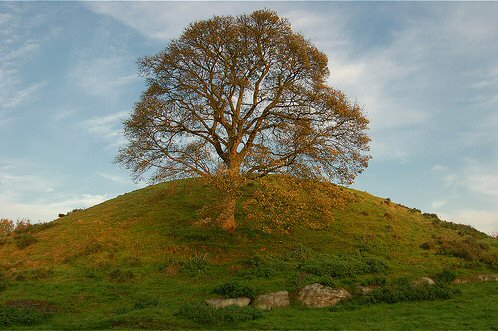
 Dowth:
(Passage Mound).
Dowth:
(Passage Mound).
Together with
Newgrange and
Knowth, this
passage-mound forms part of
the huge megalithic observatory complex in the Boyne valley.
Although not as visually magnificent as Newgrange and
Knowth, the Dowth passage mound is in many ways one the nicest of the three to
visit, as it is still a 'free-to-roam' site, while the other two are only
accessible with rushed tour-guide visits.
Layout of Dowth and passages.
(Map of Site:
How to get there)
|
Dowth:
(Dubbadh', 'The Place of Darkness') |
Dowth is considered to be the oldest of the three
passage-mounds that
compose the Boyne-valley complex.
The mound lies about 2.8km NE of Newgrange, it has a diameter of 85m
(280ft) and is 14m (47ft) high.
It has two original passages, both less spectacular than those at either
Newgrange or
Knowth with significantly shorter
passages and lower roofs. Both are on the western site of the mound,
they are termed 'Dowth North' and 'Dowth South'.
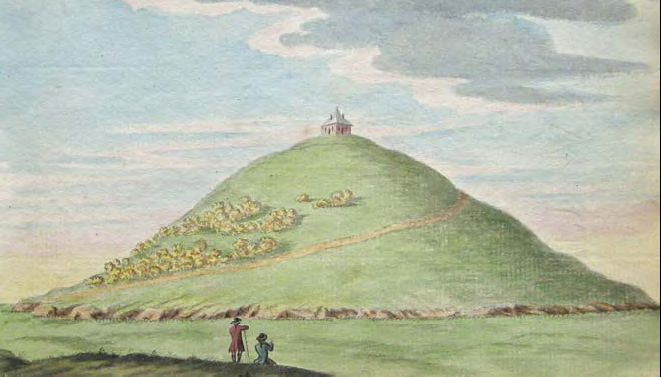
In the last century, a
house was built on the summit of the mound.
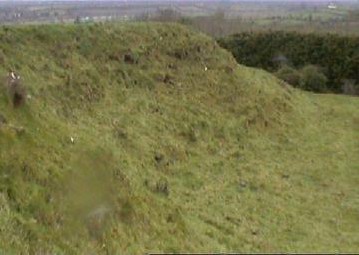
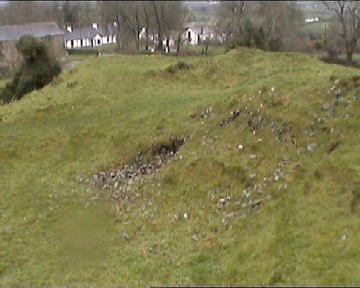
The result of the excavation in 1847, and subsequent quarrying on the
western face.
The 'solar wheels' on Kerbstone 51 at Dowth are similar to those on the
backstone of Cairn-T at Loughcrew. These symbols
are suggested to have an astronomical or calendrical meaning/purpose.
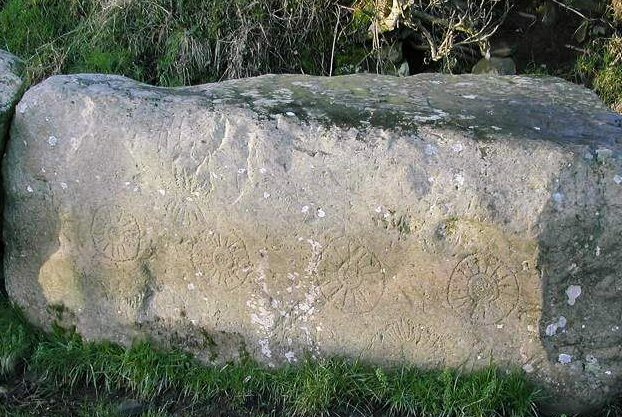
Both the quality and the quantity of engraving are substantially less than
that seen at both Knowth and Newgrange. This supports the idea that Dowth
may be the older of the three main Boyne-valley mounds.
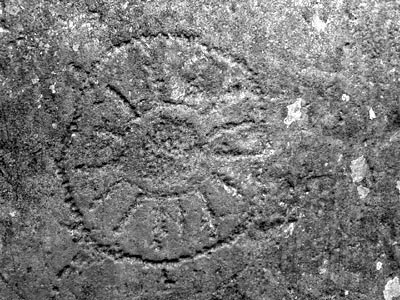
Quartz was found on the ground outside the kerb-line, showing that the
entrance to this tomb was originally surrounding by glittering white chunks
of quartzite, as at Knowth and Newgrange.
Note: On the opposite side of the mound to the
entrances, there is a depression in the kerb stones, where another entrance
may well one day be determined.
Inside the mound: Two passages have been found on the western side of
the mound, both dating back to the original construction. Some of the stones
in the passages have been engraved with symbols. A third passage was added
much later, around the 1st millennium BC. It is classified as a
souterrain.
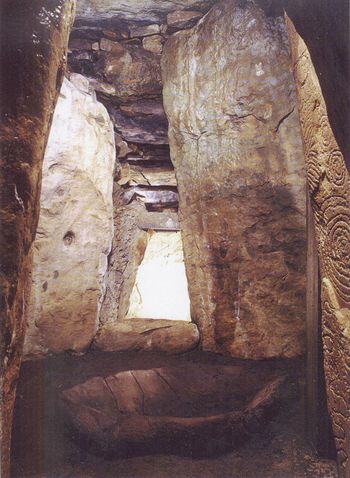
The
'Northern' passage :
Is
12-14m long, made of uprights supporting the roof lintels and divided by
three sill-stones
on the floor (one
inscribed in a similar way to those at Newgrange).
The passage leads to a
cruciform chamber with several decorated
stones and a large stone ritual basin in the middle (see right). A further series of
small chambers lead off an opening in the south-westerly corner of the main
chamber.
Note:
The chamber has a lintelled roof, (not corbelled as in Newgrange or Knowth).
'T he original entrance to the North chamber is
buried in the adjoining field to the west which is private property' (needs
confirmation).
The right-hand arm of the cruciform chamber leads into another long
rectangular chamber with an L-shaped extension entered over a low sill. It
is floored with a 2.4 metre long flagstone containing an oval bullaun
(artificial depression).
(More about cruciform chambers and
'libation bowls')
The 'Southern' passage : is 8.25 meters long. This short passage leads
to a roughly circular chamber with a single recess opening off its southeast
side. The roof has been replaced with a concrete replacement.
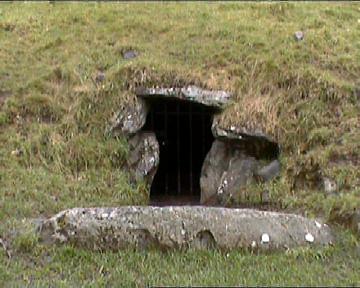
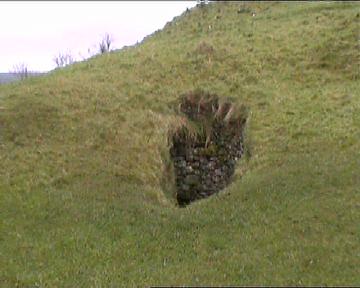
The entrances to the two passages (SW entrance - left), (and NW - right).
(Note the 'hexagonal' cup-mark on the horizontal stone (left).
The 'Souterrain'
- There is a 21.3m (70ft) long
souterrain
which crosses to left and right of the main entrance, leading to
a series of chambers with a beehive chamber at either end. This souterrain
was probably originally constructed in the 1st millennium BC.
Chronology of the Site -
The site is contemporary with the other
Boyne valley mounds, which places it
at around 3,300 BC.
The
Annals of Tighernach
tell of Dowth being plundered and burnt in 1059, with a record in the Annals
of the Four Masters of three great early battles at Dowth, and a later
burning in 1170.
Dowth Henge:
'Site Q' is an embanked enclosure, located roughly
east of Dowth passage-mound. It is reputedly the second largest such
enclosure in Ireland (Coffey 1912, P.60). The henge has two openings,
but archaeology suggests that only one is original. Both openings are
aligned to the summer solstice. Henges are often earlier constructions
than either passage mounds or stone circles.
(More
about Henges)
Archaeo-astronomy
-
Dowth passage-mound has two passages, one
orientated towards a cross-quarter day sunset, and the other to a minor
lunar standstill. The internal passages are oriented to sunsets, one to
Samhain when the sun 'dies' for the year as it goes underground, the other
the longest night of the year, the winter solstice sunset.
Dowth shares a special solar celebration with
neighbouring Newgrange during the winter solstice. From November to February
the rays of the evening sun reach into the passage and then the
chamber of Dowth South. During the winter solstice the light of the
low sun moves along the left side of the passage, then into the
circular chamber, where three stones are lit up by the sun. (Ref:
http://en.wikipedia.org/wiki/Dowth)
The convex central stone reflects the sunlight in to
a dark recess, lighting up the decorated stones there. The rays then
recede slowly along the right side of the passage and after about two
hours the sun withdraws from Dowth South.
|